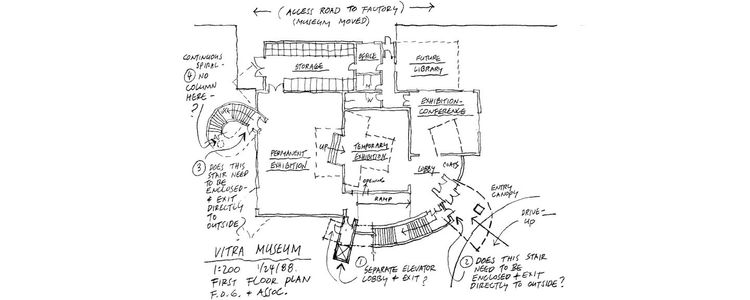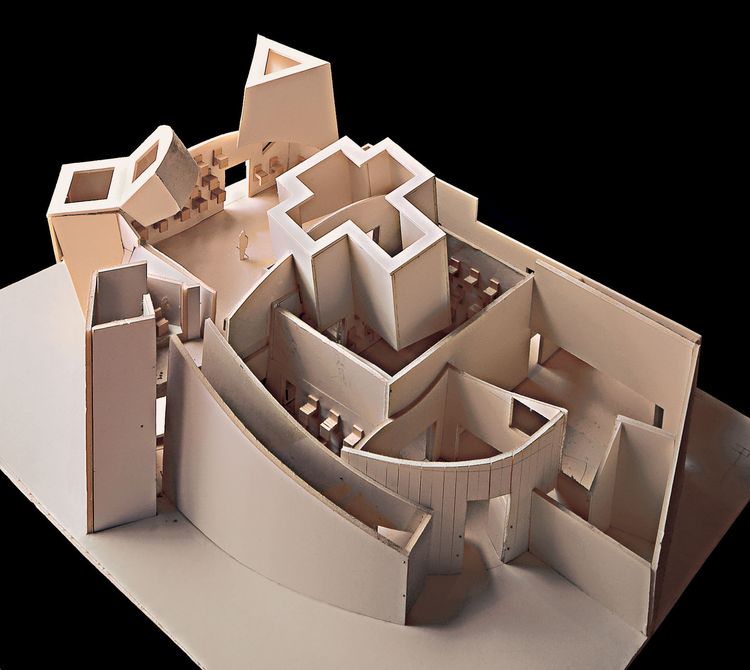ProductsChairsLounge chairsSofasOffice chairsChaises longuesStools & benchesSculpturesConference chairsAirport seatingStorage spaceMicro architectureDining tablesCafé tablesCoffee & side tablesDesksOffice furniture systemsConference systemsLightingClocksDecorative objectsCoat racks & wall shelvesTrays & vesselsNewBestsellerColour & materialAlexander Girard Antonio CitterioBarber OsgerbyCharles & Ray Eames George NelsonHella JongeriusIsamu NoguchiLounge chair finderOffice chair finderGift finderCare & repairSpare partsCare productsManufacturer warrantyVitra Circle StoresMynt: sit differentlyAntony Limited Edition 2025InspirationsLiving roomDining roomHome OfficeChildren's roomOutdoorHome StoriesAugmented RealityColours & materialsHome SelectionWorkspaceFocusMeetingWorkshopClub OfficeCitizen OfficeStudio OfficeDynamic SpacesHospitalityAirportsEducationCo-WorkingHealthcareOur ClientsDestination WorkplaceA case for classicsOffice chairsDancing OfficeHome StoriesThe Home Selection fabrics from Kvadrat and DedarAugmented Reality - bring Vitra products into your homeSchool of Design: Showcase work and knowledgeA case for classicsColour & materialAn open house An office landscape - without walls or partitionsHigh comfort of low energyA leading space for a leading art collegeServicesCare & repairCare productsManufacturer warrantyFAQ and contactInstructionsConsulting & Planning StudioVitra Circle StoresConsulting & planning in the VitraHausInstructionsOutdoor care instructionsRepair, maintenance, overhaul at the Vitra Circle Store Campus ProfessionalsCAD dataProduct factsheetsCertificatesSustainability reportInstructionsEcology informationpConPlanning examplesColour & Material LibraryCertificates and standardsHome SelectionTo the dealer loginOur ClientsMyntDestination Workplace: Visit our clients and partnersAnagram SofaMikadoTyde 2 on castorsACXDancing OfficeOffice chairsMagazineStoriesConversationsExhibitionsDesignerProject VitraA Capsule in TimeSeeing the forest for the treesRefining a classicMynt is a lifetime achievement to meA desk like a typefaceV-FoamSculptural IconsGames bring people together – just like good officesLet there be light!Social SeatingJust Do It!EVER GREENWhy the Eames La Fonda Chair was designedWhen a Sofa is more than just a Sofa: Anagram100% virgin wool – 100% recyclableAn archive is like a time capsuleVitraHaus Loft - A conversation with Sabine MarcelisA 1000 m2 piece of furnitureFrom a toy to an objectThe Eames Collection at the Vitra Design MuseumAbout the partnership between Eames and VitraVitra CampusExhibitionsGuided tours & workshopsFood and drinkShoppingActivities for familiesArchitectureYour eventConsulting & planning in the VitraHausPlan your visitVitra Campus appCampus EventsNewsVitraHausVitra Design MuseumVitra SchaudepotVitra Circle Store CampusOudolf GartenAbout VitraSustainabilityJobs & CareersDesign processThe Original is by VitraHistory - Project Vitra
"Functional, but at What Price?"
Interview with Frank Gehry

Frank Gehry did not really want to become a ballet dancer, and he lacked the true passion for a career as a cellist. Thank goodness. The field of architecture would have been denied a visionary – and the Vitra Design Museum, a building that the Canadian-born architect describes as one of his key works.
Thirty years have passed since the opening of the Vitra Design Museum. Do you remember what you thought when you were asked to build it?
Rolf [Fehlbaum] wanted me to make a chair, but I turned him down. Several times. But I don’t remember why anymore. When I met him at a dinner at the home of my friends Claes Oldenburg and Coosje van Bruggen in New York, I soon realised we were on the same wavelength. Rolf is a universal thinker. We had very animated discussions and quickly developed a good relationship.

So then he asked you to design an entire museum instead of a chair?
No, not right away. I was there when Claes and Coosje installed their sculpture ‘Balancing Tools’ in Weil am Rhein, and that was when Rolf told me he planned to develop a campus. I said that I would like to contribute something and he suggested the museum building. I figured the project was probably too small for him to justify the expense of my many trips to Europe. When he showed me his plans for a warehouse and a factory, I suggested incorporating them into the project so the costs could be kept within reasonable limits.
What appealed to you about the project?
I like Rolf a lot. Plus it was interesting to see what he was trying to achieve with his company and how he attached such importance to architecture. The museum was intended to illuminate the world of furniture with the intellectual support of the arts and put it into a larger context. That’s not something many companies do.The museum’s appearance was rather unusual for its time, especially in a small town like Weil am Rhein. How did your clients react to the initial sketches?
Everyone reacted very positively, at least the way I remember it. Rolf was interested in a sculptural result and was very supportive of my idea. We developed and discussed a variety of options. Our collective thinking ultimately led to what you see here today.

Were there ever any doubts about the feasibility of your design?
It was certainly a challenge. I really wanted the outside of the building to express the circulation on the inside. That’s how I ended up with the spiral staircases and crooked roofs. I had never done anything like this before, and computers barely played a role in my life back then. If you look very closely at the building, you can see that the curve is not continuous, but has a small bend. That made me furious. I could hardly believe it and studied the drawings time and again, but the builders showed me how my drawings resulted in a bend.It doesn’t seem to have discouraged you.
No, on the contrary. We then went to various technology companies to ask if they had tools that could help us. From that perspective, the construction of the Vitra Design Museum was the starting point for my expansion into new technologies.In this regard, the Vitra Design Museum can certainly be described as one of your key works. Or do you see it differently?
The museum was definitely a major turning point in my work. But not only in terms of computer technology. My architectural language and way of building also changed. Plus I had to figure out how to connect the museum to the factory behind it. This paved the way for a new way of thinking about context. How do you create a context? And to what extent do buildings reflect each other? It seemed wrong not to carry over the sculptural architecture of the museum to the entire complex. The sculptural wings of the factory reflect the language of the museum, and if you view the complex from the road, it looks like a single building.
In the meantime, your museum is no longer a solitary highlight on the Vitra Campus, but has been complemented by many other interesting buildings. What do you think about this development?
I like how all the buildings are connected in some way and form a relationship with one another, but also remain separate. When I built the museum and the factory, I looked at Grimshaw’s building with its continuous lines of windows, and thought the punched-out windows of my design would offer a good contrast. Then came Álvaro Siza. He went back even further and ended up with bricks. It has become a living history of architecture.Before the construction of the Vitra Design Museum, you already had some experience with the conception of museums. To what extent were the parameters affected by the fact that chairs were to be exhibited.
It’s not as though art couldn’t be exhibited at the Vitra Design Museum. But if you design a building for three-dimensional objects, you have much more freedom. You can also put furniture on sloping surfaces, move them around, detach them from the walls and interact with the architecture. In art museums, especially those intended for paintings, you often worry about the possible intrusive effect of the architecture because there’s the feeling that this creates a conflict with the exhibits.

This also brings up the question of the extent to which a museum should be a stage or a container, and to what extent the building itself can be given the status of a work of art.
This is a very complex issue. Should a museum building limit its own artistic qualities or ambitions? I don’t believe this is necessary. The demands placed on a building housing art or design do not preclude the building itself from striving to achieve something that is regarded as art. For me, architecture has always had an ambition to be a work of art, and many great artists like Giotto, El Greco or Michelangelo were also architects. I use the term art to distinguish it from the many tasteless buildings that surround us. This is not art. Art has something to do with emotions.

Can you give an example of this?
When I first saw the statue of the Charioteer of Delphi, I had to cry over its beauty. Almost 500 years B.C., someone succeeded in creating something out of a piece of bronze that still touches us today. From that point on, I was interested in conveying emotions and feelings in materials. Buildings can express sentiments. That’s why I love to build concert halls. You are in a partnership with an orchestra, in a place where many emotions are released.I think it’s important to create transcendent spaces, spaces where you can experience a feeling of exhilaration.
Did you ever have the desire to design a religious building if emotions are so important to you?
Up until now, no one has commissioned me with the task. But I would very much like to create a sacred building, even though I am not a religious person. I think it’s important to create transcendent spaces, spaces where you can experience a feeling of exhilaration.Even if they aren’t religious structures, many of your buildings stir up emotions, both positive and negative. On the one hand, people are enthusiastic about the way you play with complex geometries; on the other, people like to question the functionality of your buildings. What is your perspective on the modernist relationship between form and function?
‘Form follows function’ – I’m not so sure. You can interpret this formula in very different ways, but you always have to remember that there will be a user. From this point of view, it has to be functional. You build for clients who need a building for a certain purpose. But functional doesn’t mean you can neglect other aspects. If you look at the Barcelona Pavilion – the aesthetic perfection of a functional building – you can see the effort and material contortions that were needed to connect the roof with the walls, to make this pure space a reality. Yes, it is functional, but at what price? I myself and other architects of my generation wanted more. We felt an urgent need to expand architecture to accommodate and reflect the world we lived in and which was undergoing rapid changes in response to technological developments. In exploring this need, I hit upon curves as a means of expressing movement and the feeling of acceleration.
You’ve been an architect for over 60 years. Have you ever wanted to do anything else?
I did think about becoming a ballet dancer. No, I’m just joking [laughs]. I always wanted to play the cello, but somehow I never got very far – even though I had the opportunity. I had exceptionally good teachers. But it was never something I pursued with fervour. It was always just a fantasy. Architecture, on the other hand, still fills me with enthusiasm. Sometimes I can make myself ill trying to find the right solution, but I still love this quest for perfection.
Publication date: 17.10.2019
Author: David Streiff Corti
Images: Gabriele Basilico, Maja Baumgartner / Barragan Foundation, Richard Bryant, Thomas Dix, Rolf Frei, © Gehry Ass. LLC, Karin Hessmann, Marek Iwicki, Julien Lanoo, Peter Mauss / Esto, Bettina Matthiessen, Mark Niedermann, Andreas Sütterlin, Vitra Design Museum


